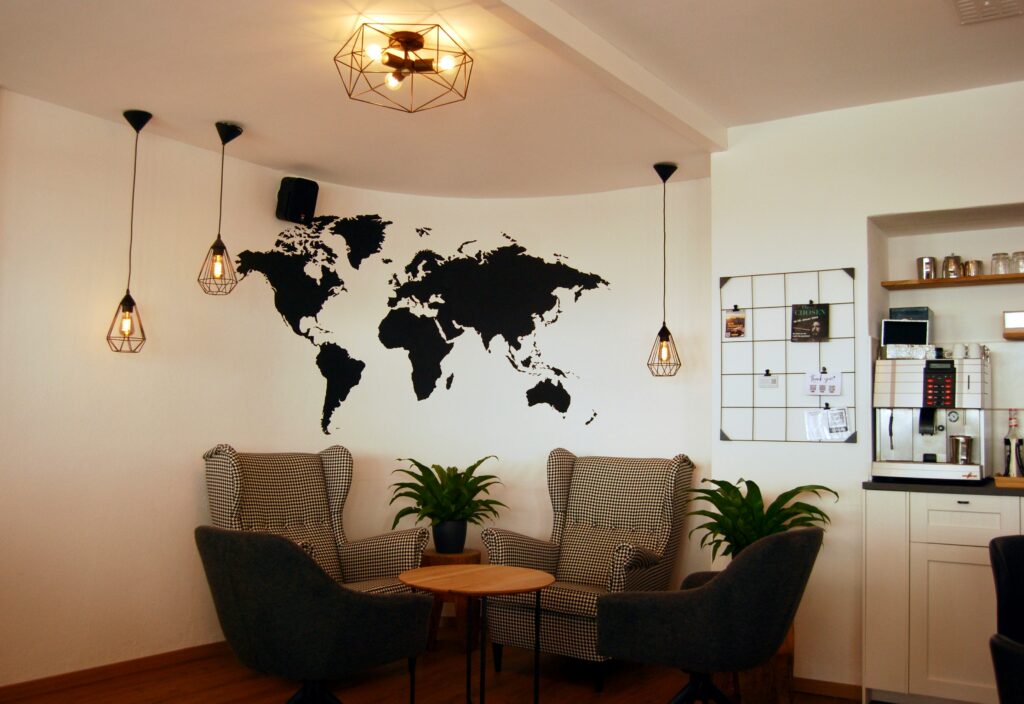Meeting Norms for a New Era

Twenty five years ago, in a quiet moment, I earnestly wrote the following about my life and career purpose: “I dedicate my life to enhancing the well-being of our world–people and planet.” I am still working to fulfill that mission. As part of that work, recently I prepared to participate in an international meeting on human and global flourishing.
The gathering was taking place in the American Midwest; I live in New York. Several months ahead, I booked my flights. On a particularly stormy Friday before a holiday weekend, as I waited surrounded by fellow anxious travelers in a crowded airport terminal, I did what many of us do in the face of anxiety: I checked my phone. I watched as group text messages from around the world rolled in from colleagues: “Missed connection.” “Massively delayed.” “Flight totally canceled.” As I stood there scrolling, it hit me; my flight would be contributing to the very same consequences of climate change–wildfire smoke, lightning storms, and flooding– that were causing this airport chaos.
In other words, to attend a gathering dedicated to human and global flourishing, I was inadvertently undermining it. The weight of the irony began to sink in: How can I consider myself an advocate of global flourishing while I’m about to board a plane that contributes to its harm?
The Dilemma Leaders Face
Despite the cognitive dissonance, I did eventually board that flight. But once I arrived, in late-night conversations and early morning walks, I began raising questions about these types of dilemmas with my colleagues. As a group dedicated to helping people flourish in organizations, we knew that while some executives are directly responsible for helping lower their companies’ carbon footprints and advance the well-being of their employees, even those who are not directly responsible for such concerns make choices every day that impact their employees, organizations, communities and world.
One colleague who works for a United Nations-related NGO recounted the toll of frequent international travel on her own and her colleagues’ lives. She described an organizational culture in which people are expected to simply live with the colds, flus and other viruses that international travel inevitably brings. Another friend who had driven his electric car to the conference from New York, with two other attendees in tow, revealed what one creative alternative (at least domestically) might look like.
Those conversations caused me to consider what all leaders can do, regardless of job title or formal area of responsibility, to make thoughtful choices about how, when, and where to come together in this post-Covid, climate-crisis era. Below are some ideas toward this end.
Question Assumptions
First, we can get in the habit of questioning our most basic assumptions. While my entire professional life is devoted to helping executives think creatively to solve their toughest challenges, I will admit that when I was preparing to attend this conference, it had simply not occurred to me to consider creative alternatives to flying. If I had thought about my travel choices at all, the implicit question guiding my thought process had been: What is the fastest and most convenient way to get from Point A to Point B? (Sound familiar?)
As leaders, we can normalize a habit of questioning the ways “we’ve always done things.” We can ask ourselves why we’re doing what we’re doing and pause to think of better ways we haven’t yet considered.
Weigh Tradeoffs
To the extent that we care about the well-being of our employees and the planet, if we don’t pay attention to the tradeoffs we are unconsciously making, we may inadvertently be doing more harm than good without even realizing it.
When it comes to convening, the point isn’t to try to identify one answer that is always right and one that is wrong. As my friends Wendy K. Smith and Marianne W. Lewis, co-authors of the bestselling book Both/And Thinking: Embracing Creative Tensions to Solve Your Toughest Problems advise, the point is to be aware of the inherent tensions between the various options and seek to optimize success by consciously choosing which costs we’re willing to bear, rather than sleepwalking into default assumptions.
For example, we can weigh tradeoffs about gathering by asking questions like the following:
-
What are our purposes? Why are we meeting? What are we hoping to accomplish by gathering? What formats might best support those purposes? What costs are we willing to pay to achieve those purposes?
-
How can we manage the tension between individual well-being and organizational productivity? What are the organizational benefits of in-person opportunities for collaboration? What toll might frequent travel take on employees’ individual health and personal lives? What are the costs to the organization of loss of productivity due to illness from frequent travel?
-
How can we manage the tension between environmental / individual costs and organizational gain? What environmental and individual well-being costs will likely be incurred if we gather in person? Do we think the payoff to the organization will outweigh the costs to the environment and individual well-being that travel may incur? How can we design our gathering to maximize the benefits (and justify the costs)?
-
How can we get the best of both virtual and in person formats? For example, instead of hosting one global in-person conference, could we host an online conference with regional hubs where people travel locally, connect in person, and get the benefit of simultaneous content shared globally?
Know Your Purpose, and Design Your Gathering to Match It
As another friend, Priya Parker, writes about in her bestselling book, The Art of Gathering: How We Meet and Why It Matters, high quality leadership involves first considering our purposes for meeting and then designing gatherings to achieve those purposes.
Below I’ve listed four distinct sets of meeting purposes, with formats I’ve designed to achieve each of those purposes, along with tradeoffs to consider:
-
If your purpose is to bring people together for deep connection and collaboration, nuanced dialogue or relationship-building, it’s probably best to meet in person. Make the most of these gatherings with facilitated conversations, small-group work, and plenty of informal social time. While meeting face-to-face allows for richer dialogue and deepening relationships, it may come with tradeoffs: a larger environmental footprint and potential negative impacts on individual well-being.
-
If your goal is ongoing team learning, collaboration, and relationship-building, you might plan to meet regularly locally–city by city–in person. Again, make the most of these gatherings with facilitated small-group conversations and informal social time. While this approach helps preserve participants’ time zones and sleep cycles, reduces environmental impact, and minimizes the spread of germs, it does not directly enhance cross-regional collaboration and relationship-building.
-
As many of us have discovered over the past several years, for routine collaboration and decision-making, it’s often best to meet virtually. Using screens and phones for day-to-day coordination helps preserve time zones, sleep cycles, and the environment, while also limiting germ exposure. The main tradeoff, which many have experienced, is that it can reduce opportunities for spontaneous or deeper in-person connection. However, as Wendy K. Smith points out, even in virtual formats, we can purposefully leave time for unstructured socializing to gain the ‘water cooler’ benefits.
-
Finally, when your purpose is to share information, resources and updates, or plan and execute collaborative projects, or provide organizational and individual learning, asynchronous tools can be ideal. Use project planning platforms, email, messaging, articles, books, podcasts, videos and blogs to share information and collaborate without meeting in real time. This preserves time zones, sleep cycles, and environmental footprint while minimizing germ circulation, but it does not provide interactive engagement in real time.
A Call to Creative Leadership
The choices we make about how our organizations meet send powerful signals. We’re not just deciding about flights, Zoom calls, or local gatherings—we’re shaping organizational culture. Every decision about whether and how we convene carries an important message about what, and who, matters most. By questioning assumptions, weighing tradeoffs, and knowing our purposes and designing formats to match them, we will not only reduce environmental impact and enhance individual well-being; we will build cultures of intentionality, care, and foresight. And that, more than anything, is what allows human and global flourishing to grow.
Are you a leader who has faced similar dilemmas? How have you approached them?
(A version of this article was originally published in Psychology Today.)
Subscribe to the newsletter and learn to achieve optimal outcomes.
When you sign up, you'll also receive a complimentary Optimal Outcomes Workbook.
"*" indicates required fields

